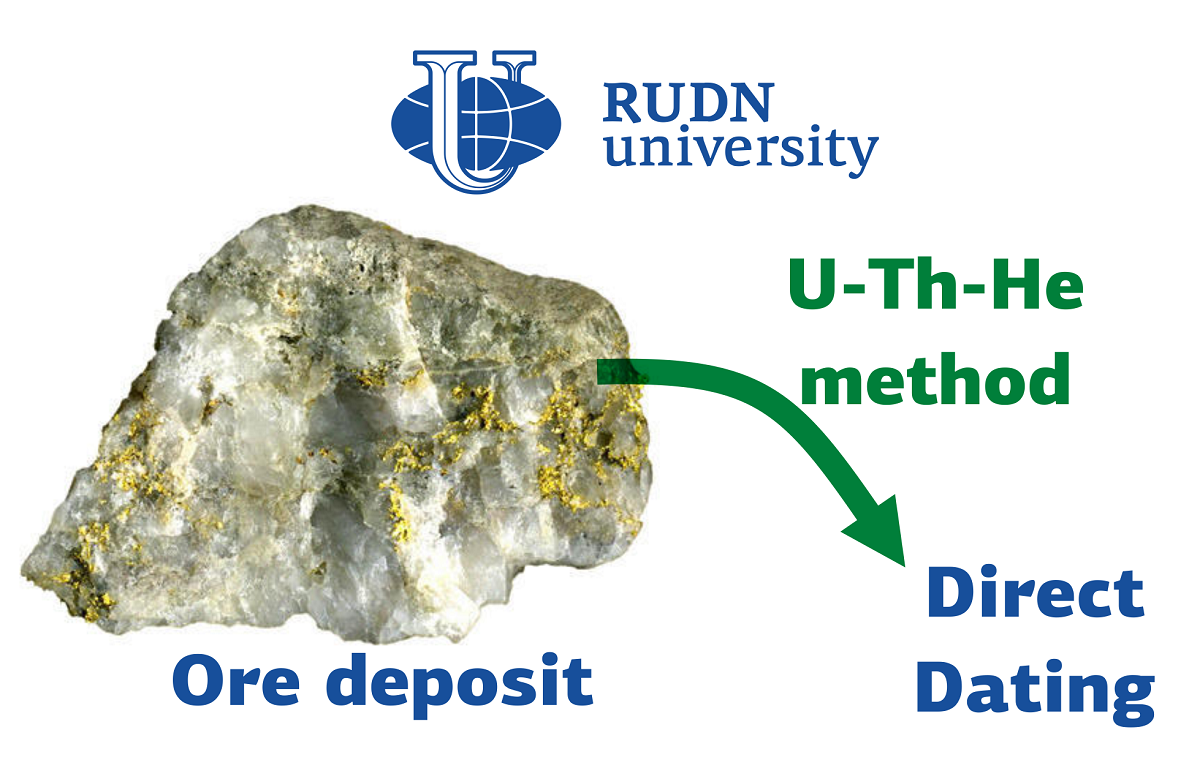Geologists have proven the effectiveness of a simple and cheap method for determining the age of minerals
To understand when geological processes occurred — the formation of ore, the movement of tectonic plates, and others — scientists use geochronology methods, for example, using minerals. In the course of geological processes, the mineral pyrite — iron disulfide is often formed. If you find out the age of pyrite, you can understand when the geological event occurred. Usually, the age of sulfides is determined by the rhenium-osmium method (Re-Os) — knowing their half-life and the number of isotopes in the mineral composition, the age of the sample is calculated. However, the measurement procedure is quite complicated, and the result is not accurate. In addition, about 400 mg of material is needed for analysis, and it is not always possible to get them. A possible alternative to this method is to determine the age by isotopes of uranium, thorium and helium (U-Th-He).
“In the last decade, a lot of research has been focused on the behavior of radiogenic helium in various minerals, which has not usually been studied in geochronology. Pyrite dating based on U-Th-He has several potential advantages over the traditional Re-Os dating technique. Firstly, it requires less material (~1 mg). Secondly, the methodology of U-Th-He dating is simpler, and its implementation is financially less costly,” Doctor of Geological and Mineralogical Sciences Ilya Vikentiev, Professor of the Department of Subsoil Use and Oil and Gas Affairs of the RUDN.
Scientists of the RUDN, St. Petersburg State University, the Institute of Geology and Geochronology of the Precambrian, the Institute of Geology of Ore Deposits, Petrography, Mineralogy and Geochemistry of the Russian Academy of Sciences and the Institute of Geochemistry and Analytical Chemistry of the Russian Academy of Sciences measured the age of pyrite in the largest gold deposit in the Polar Urals — New Year’s-Monto using the U-Th-He method. Its reserves are estimated at 33 tons.
The researchers studied 70 pyrite particles with a size of 0.2-0.5 mm and a total mass of 1-2 mg. The samples were divided into six parts and the age was determined for each of them by the U-Th-He dating method. On average, it turned out to be 382 million years old. This coincided with another independent assessment, which was carried out on ore-bearing geothermal activity (it gave a result of about 380 million years).
“This is the second example of a successful application of the U-Th-He isotope system for pyrite dating and the first successful application for pyrite from modified rocks, so our work provides the next important step in the development of the U-Th-He dating technique. However, there are still many issues that need to be resolved in order to make this technique widely applicable and reliable. In the future, the U-Th-He system for pyrite will potentially become a useful tool for the geochronology of numerous geological processes accompanying the crystallization of sulfides,” Doctor of Geological and Mineralogical Sciences Ilya Vikentiev, Professor of the Department of Subsoil Use and Oil and Gas Affairs of the RUDN.
The results are published in the journal Geosciences.
Sergey Ivanov, a scholar from St. Petersburg, has been named the first winner of RUDN University’s International Prize for Scientific Achievements in Mathematics, worth 5 million rubles.
Products derived from microalgae represent a cutting-edge development in the field of bioeconomy. The potential of this biological resource was discussed at the international research seminar “Foundations for a Green Sustainable Energy”, part of the BRICS Network University’s thematic group on “Energy”. The event was organized by the Institute of Ecology at RUDN University.
Ambassadors of Russian education and science met at a conference in RUDN University to discuss how they can increase the visibility of Russian universities and research organizations in the world, and attract more international students in Russia.
